-

-
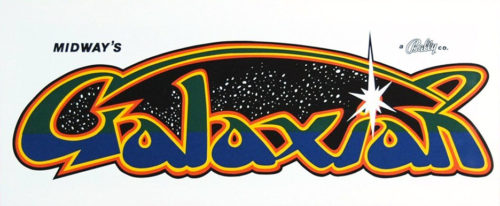 Galaxian (Gyarakushian?) is an arcade game that was developed by Namco and released in October 1979. It was published by Namco in Japan and imported to North America by Midway that December. A fixed shooter game in which the player controls a spaceship at the bottom of the screen, and shoots enemies descending in various directions, it was designed to compete with Taito Corporation’s successful earlier game Space Invaders (which was released in the previous year, and also imported to the US by Midway Games). The game was highly popular for Namco upon its release, and has been a focus of competitive gaming ever since. It spawned a successful sequel, Galaga, in 1981, and the lesser known Gaplus and Galaga ‘88 in 1984 and 1987 respectively, as well as many later ports and adaptations. Along with its immediate sequel, it was one of the most popular games during the golden age of arcade video games. Galaxian expanded on the formula pioneered by Space Invaders. As in the earlier game, Galaxian features a horde of attacking aliens that exchanged shots with the player. In contrast to Space Invaders, Galaxian added an element of drama by having the aliens periodically make kamikaze-like dives at the player’s ship, the Galaxip.[1] This made it the first game to feature enemies with individual personalities.[2] The game’s plot consists of a title screen that displayed the message “WE ARE THE GALAXIANS / MISSION: DESTROY ALIENS”.[3] Galaxian was very successful for Namco and introduced several “firsts”. Although not the first color video game, Galaxian took RGB color graphics a step further with multi-colored animated sprites and explosions, different colored fonts for the score and high score, the scrolling starfield, and graphic icons that show the number of lives left and how many stages the player had completed. It also features a crude theme song and more prominent background “music.” These elements combine to create a look and feel that would set the standard for arcade games in the 1980s such as Pac-Man. Gameplay The gameplay is relatively simple. Swarm after swarm of alien armies attack the player’s ship that moves left and right at the bottom of the wraparound screen. The ship can only have one shot on screen at a time. The player defeats one swarm, only to have it replaced by another more aggressive and challenging swarm in the next stage. A plain and repetitive starfield scrolls in the background.
Galaxian (Gyarakushian?) is an arcade game that was developed by Namco and released in October 1979. It was published by Namco in Japan and imported to North America by Midway that December. A fixed shooter game in which the player controls a spaceship at the bottom of the screen, and shoots enemies descending in various directions, it was designed to compete with Taito Corporation’s successful earlier game Space Invaders (which was released in the previous year, and also imported to the US by Midway Games). The game was highly popular for Namco upon its release, and has been a focus of competitive gaming ever since. It spawned a successful sequel, Galaga, in 1981, and the lesser known Gaplus and Galaga ‘88 in 1984 and 1987 respectively, as well as many later ports and adaptations. Along with its immediate sequel, it was one of the most popular games during the golden age of arcade video games. Galaxian expanded on the formula pioneered by Space Invaders. As in the earlier game, Galaxian features a horde of attacking aliens that exchanged shots with the player. In contrast to Space Invaders, Galaxian added an element of drama by having the aliens periodically make kamikaze-like dives at the player’s ship, the Galaxip.[1] This made it the first game to feature enemies with individual personalities.[2] The game’s plot consists of a title screen that displayed the message “WE ARE THE GALAXIANS / MISSION: DESTROY ALIENS”.[3] Galaxian was very successful for Namco and introduced several “firsts”. Although not the first color video game, Galaxian took RGB color graphics a step further with multi-colored animated sprites and explosions, different colored fonts for the score and high score, the scrolling starfield, and graphic icons that show the number of lives left and how many stages the player had completed. It also features a crude theme song and more prominent background “music.” These elements combine to create a look and feel that would set the standard for arcade games in the 1980s such as Pac-Man. Gameplay The gameplay is relatively simple. Swarm after swarm of alien armies attack the player’s ship that moves left and right at the bottom of the wraparound screen. The ship can only have one shot on screen at a time. The player defeats one swarm, only to have it replaced by another more aggressive and challenging swarm in the next stage. A plain and repetitive starfield scrolls in the background. -
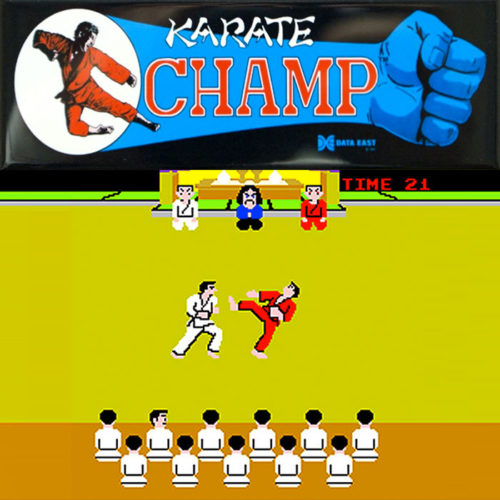
-
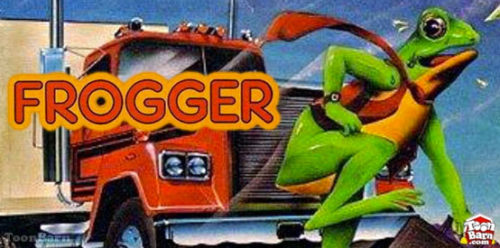 Frogger is an arcade game introduced in 1981. It was developed by Konami, and licensed for worldwide distribution by Sega/Gremlin. The object of the game is to direct frogs to their homes one by one. To do this, each frog must avoid cars while crossing a busy road and navigate a river full of hazards. Skillful players may obtain some bonuses along the way. The game is regarded as a classic from the golden age of video arcade games and was noted for its novel gameplay and theme. It was also an early example of a game using more than one CPU, as it used two Z80 processors. Frogger is still popular and versions can be found on many Internet game sites. By 2005, Frogger had sold 20 million copies worldwide, including 5 million in the United States. The player starts with three, five, or seven frogs (lives). The player guides a frog which starts at the bottom of the screen. The lower half of the screen contains a road with motor vehicles, which in various versions include cars, trucks, buses, dune buggies, bulldozers, vans, taxis, bicyclists, and/or motorcycles, speeding along it horizontally. The upper half of the screen consists of a river with logs, crocodiles, and turtles, all moving horizontally across the screen. The very top of the screen contains five “frog homes” which are the destinations for each frog. Every level is timed; the player must act quickly to finish each level before the time expires. The only player control is the joystick used to navigate the frog; each push in a direction causes the frog to hop once in that direction. On the bottom half of the screen, the player must successfully guide the frog between opposing lanes of trucks, cars, and other vehicles, to avoid becoming roadkill. The middle of the screen, after the road, contains a median where the player must prepare to navigate the river. By jumping on swiftly moving logs and the backs of turtles, the player can guide his or her frog safely to one of the empty lilypads. The player must avoid crocodiles, snakes, and otters in the river, but may catch bugs or escort a lady frog for bonuses. When all five frogs are directed home, the game progresses to the next, harder level. After five levels, the game gets briefly easier yet again gets progressively harder to the next fifth level. There are many different ways to lose a life in this game (illustrated by a “skull and crossbones” symbol where the frog was), including: 1.Being hit by a road vehicle 2.Jumping into the river’s water 3.Running into snakes, otters or into a crocodile’s jaws in the river 4.Jumping into a home invaded by a crocodile 5.Staying on top of a diving turtle until it has completely submerged 6.Riding a log, crocodile, or turtle off the side of the screen 7.Jumping into a home already occupied by a frog 8.Jumping into the side of a home or the bush 9.Running out of time before getting a frog home Frogger is available as a standard upright or cocktail cabinet. The controls consist solely of a 4-direction joystick used to guide the frog’s jump direction. The number of simultaneous players is one, and the game has a maximum of two players. The game’s opening tune is the first verse of a Japanese children’s song called Inu No Omawarisan (The Dog Policeman). The song remained intact in the US release. Other Japanese tunes that are played during gameplay include the themes to the anime Hana no Ko Lunlun and Araiguma Rascal.
Frogger is an arcade game introduced in 1981. It was developed by Konami, and licensed for worldwide distribution by Sega/Gremlin. The object of the game is to direct frogs to their homes one by one. To do this, each frog must avoid cars while crossing a busy road and navigate a river full of hazards. Skillful players may obtain some bonuses along the way. The game is regarded as a classic from the golden age of video arcade games and was noted for its novel gameplay and theme. It was also an early example of a game using more than one CPU, as it used two Z80 processors. Frogger is still popular and versions can be found on many Internet game sites. By 2005, Frogger had sold 20 million copies worldwide, including 5 million in the United States. The player starts with three, five, or seven frogs (lives). The player guides a frog which starts at the bottom of the screen. The lower half of the screen contains a road with motor vehicles, which in various versions include cars, trucks, buses, dune buggies, bulldozers, vans, taxis, bicyclists, and/or motorcycles, speeding along it horizontally. The upper half of the screen consists of a river with logs, crocodiles, and turtles, all moving horizontally across the screen. The very top of the screen contains five “frog homes” which are the destinations for each frog. Every level is timed; the player must act quickly to finish each level before the time expires. The only player control is the joystick used to navigate the frog; each push in a direction causes the frog to hop once in that direction. On the bottom half of the screen, the player must successfully guide the frog between opposing lanes of trucks, cars, and other vehicles, to avoid becoming roadkill. The middle of the screen, after the road, contains a median where the player must prepare to navigate the river. By jumping on swiftly moving logs and the backs of turtles, the player can guide his or her frog safely to one of the empty lilypads. The player must avoid crocodiles, snakes, and otters in the river, but may catch bugs or escort a lady frog for bonuses. When all five frogs are directed home, the game progresses to the next, harder level. After five levels, the game gets briefly easier yet again gets progressively harder to the next fifth level. There are many different ways to lose a life in this game (illustrated by a “skull and crossbones” symbol where the frog was), including: 1.Being hit by a road vehicle 2.Jumping into the river’s water 3.Running into snakes, otters or into a crocodile’s jaws in the river 4.Jumping into a home invaded by a crocodile 5.Staying on top of a diving turtle until it has completely submerged 6.Riding a log, crocodile, or turtle off the side of the screen 7.Jumping into a home already occupied by a frog 8.Jumping into the side of a home or the bush 9.Running out of time before getting a frog home Frogger is available as a standard upright or cocktail cabinet. The controls consist solely of a 4-direction joystick used to guide the frog’s jump direction. The number of simultaneous players is one, and the game has a maximum of two players. The game’s opening tune is the first verse of a Japanese children’s song called Inu No Omawarisan (The Dog Policeman). The song remained intact in the US release. Other Japanese tunes that are played during gameplay include the themes to the anime Hana no Ko Lunlun and Araiguma Rascal. -
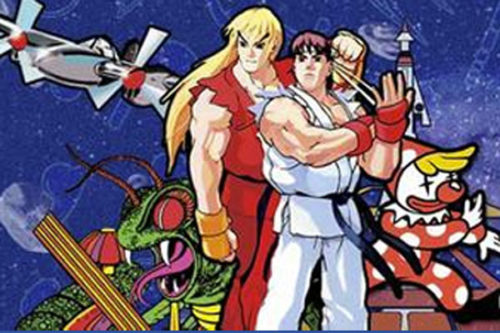 This one or two player upright video game is not just one dedicated game like Pac-Man or Missle Command. Through the use of modules or packs installed in the machine, more games could be added to its itinerary of playable classics. Early video games had full circuit boards within the machine as well as dedicated transformers and controls. Nowadays, emulators have taken over the arcade and home markets, allowing thousands of games in the footprint of one machine. Pinball machines have also been emulated in this formats. These games are finding themselves more and more in the home market for obvious reasons: you can have 100 of your favorite machines to come home to in one solo unit–and you own the keys!
This one or two player upright video game is not just one dedicated game like Pac-Man or Missle Command. Through the use of modules or packs installed in the machine, more games could be added to its itinerary of playable classics. Early video games had full circuit boards within the machine as well as dedicated transformers and controls. Nowadays, emulators have taken over the arcade and home markets, allowing thousands of games in the footprint of one machine. Pinball machines have also been emulated in this formats. These games are finding themselves more and more in the home market for obvious reasons: you can have 100 of your favorite machines to come home to in one solo unit–and you own the keys! -
 Yet another legendary, genre-defining game – in an era replete with genre-defining classics - in which a single player takes control of a ship trapped in the middle of an asteroid field. A number of large, slow-moving asteroids drift randomly around the play area and must be shot by the player. When shot, the asteroids will break into a number of smaller pieces, which must also be shot until, eventually, all of the asteroids and fragments will be destroyed and the next wave begins. Asteroids introduced real-world physics to video games for the first time, with speed and inertia all adding to the player’s problems. As well as the inertia of the player’s ship – forcing the player to allow for the ship slowing down and speeding up whenever the thrust button was utilized – shot asteroids would often send fragments flying in seemingly random directions, and at varying and unpredictable speeds. As well as the ever-present asteroids, alien saucers also make a regular appearance. These move diagonally around the screen, firing at the player’s ship and must be quickly destroyed.
Yet another legendary, genre-defining game – in an era replete with genre-defining classics - in which a single player takes control of a ship trapped in the middle of an asteroid field. A number of large, slow-moving asteroids drift randomly around the play area and must be shot by the player. When shot, the asteroids will break into a number of smaller pieces, which must also be shot until, eventually, all of the asteroids and fragments will be destroyed and the next wave begins. Asteroids introduced real-world physics to video games for the first time, with speed and inertia all adding to the player’s problems. As well as the inertia of the player’s ship – forcing the player to allow for the ship slowing down and speeding up whenever the thrust button was utilized – shot asteroids would often send fragments flying in seemingly random directions, and at varying and unpredictable speeds. As well as the ever-present asteroids, alien saucers also make a regular appearance. These move diagonally around the screen, firing at the player’s ship and must be quickly destroyed. -
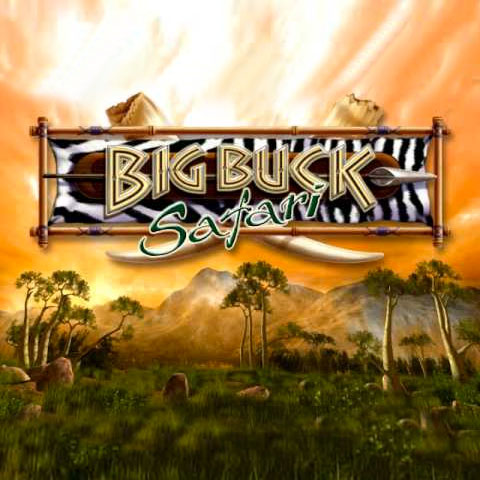
-
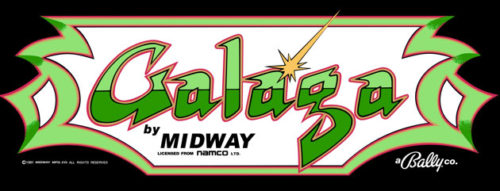 Galaga is a single-screen shoot-em-up in which the player controls a “fighter” spaceship and must defend the home planet against the on-coming hordes of alien invaders. The fighter can only move left and right along the bottom of the screen. Galaga aliens fly onto the screen in a variety of formations – dropping bombs as they do so – before forming troop lines at the top of the screen. Once a troop line is formed, the aliens separate and start attacking the player’s ship in ones, twos and threes. The top line “boss” aliens need to be shot twice before they are destroyed. The boss alien has a tractor beam that can capture the player’s fighter. A captured fighter changes color from white to red and stays with that particular boss Galaga until it’s destroyed. The fighter can be retrieved by destroying the boss Galaga that captured it, but players must be careful not to destroy the captured ship itself, or that ship is lost. A rescued fighter changes color back from red to white and links up with the player’s current fighter, doubling its fire power. As players progress through each screen, the speed and number of alien attacks increases. Alien formations also become more complex, making the aliens harder to shoot. Bonus fighters are awarded periodically throughout the game, as players reach specific point values (dictated by the “bonus life” dip-switch setting). Each enemy ship also has an assigned point value (see scoring below). The alien troop lines that form at the top of the screen are, from top to bottom: Boss Galaga, Butterflies (red/white bug ships) and Bees (blue/yellow bug ships). I cut my teeth on video games like this back in the ’80s. Pinball lost momentum in this era as video games ruled the arcade at this time.
Galaga is a single-screen shoot-em-up in which the player controls a “fighter” spaceship and must defend the home planet against the on-coming hordes of alien invaders. The fighter can only move left and right along the bottom of the screen. Galaga aliens fly onto the screen in a variety of formations – dropping bombs as they do so – before forming troop lines at the top of the screen. Once a troop line is formed, the aliens separate and start attacking the player’s ship in ones, twos and threes. The top line “boss” aliens need to be shot twice before they are destroyed. The boss alien has a tractor beam that can capture the player’s fighter. A captured fighter changes color from white to red and stays with that particular boss Galaga until it’s destroyed. The fighter can be retrieved by destroying the boss Galaga that captured it, but players must be careful not to destroy the captured ship itself, or that ship is lost. A rescued fighter changes color back from red to white and links up with the player’s current fighter, doubling its fire power. As players progress through each screen, the speed and number of alien attacks increases. Alien formations also become more complex, making the aliens harder to shoot. Bonus fighters are awarded periodically throughout the game, as players reach specific point values (dictated by the “bonus life” dip-switch setting). Each enemy ship also has an assigned point value (see scoring below). The alien troop lines that form at the top of the screen are, from top to bottom: Boss Galaga, Butterflies (red/white bug ships) and Bees (blue/yellow bug ships). I cut my teeth on video games like this back in the ’80s. Pinball lost momentum in this era as video games ruled the arcade at this time. -
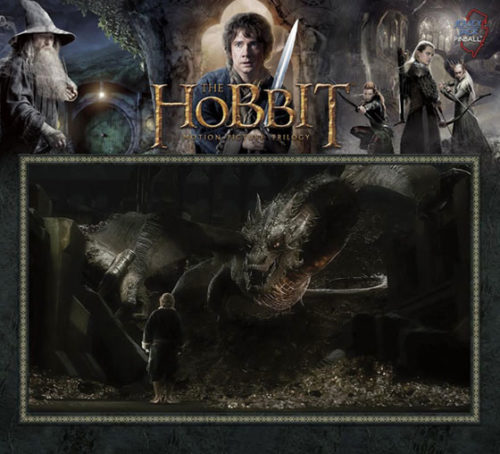 •27” HD LCD Display featuring full color custom animation, movie clips, scoring, attract mode, back glass artwork and more.. •Standard stainless steel spring-loaded metal lockdown bar and side armor •RGB-LED Playfield Lighting •Super-White LED GI Lighting •Full color digitally printed cabinet and back box artwork •7 Speaker 2.1 Digital Audio system. •Each game will have a number affixed to the game apron to be seen under the playfield glass… •Premium Clear Coated Playfield
•27” HD LCD Display featuring full color custom animation, movie clips, scoring, attract mode, back glass artwork and more.. •Standard stainless steel spring-loaded metal lockdown bar and side armor •RGB-LED Playfield Lighting •Super-White LED GI Lighting •Full color digitally printed cabinet and back box artwork •7 Speaker 2.1 Digital Audio system. •Each game will have a number affixed to the game apron to be seen under the playfield glass… •Premium Clear Coated Playfield -
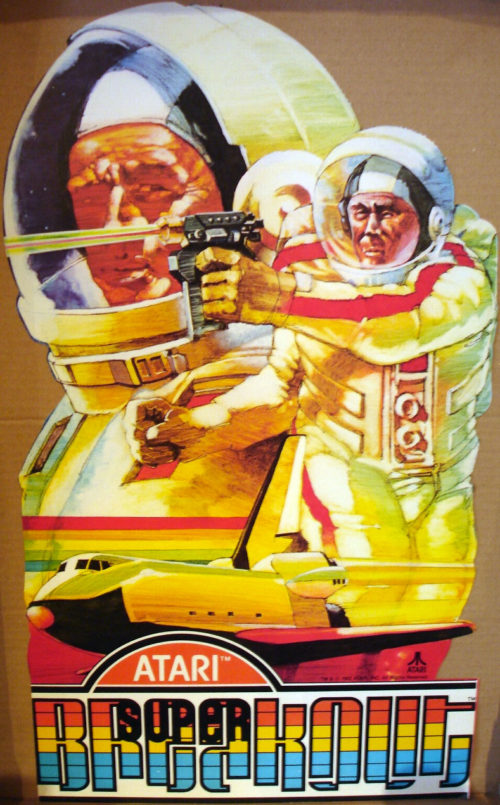 Move a paddle back and forth at the bottom of the screen to rebound a ball back into a brick wall, knocking bricks out one by one. There are three separate games: double — same as Breakout, knock down bricks and when they are all gone a new wall forms cavity — two other balls are inside the wall, when they have an escape route you can hit them as well progressive — as the wall is destroyed, new bricks are added and the entire wall shifts down toward your paddle. The sound effects are just simple beeps. This video game is a typical late ’70s machine which has been reproduced in many variations as well as downloaded apps on smartphones today. No complicated rules here, which is why it was so popular in its glory days. You control the horizontal paddle at the bottom of the playfield and, through the use of the spin controller, try to prevent losing the “ball” below the paddle. By aiming at the bricks, you try to hit all of them and then “break through” to the next layer of bricks. This accomplishment is rewarded with a period of high scoring and ricocheting video bounces of the “ball” until it escapes the brick layer and comes into your paddle again. These brick layers then start to drop toward your paddle. By the way, the TV is black and white!
Move a paddle back and forth at the bottom of the screen to rebound a ball back into a brick wall, knocking bricks out one by one. There are three separate games: double — same as Breakout, knock down bricks and when they are all gone a new wall forms cavity — two other balls are inside the wall, when they have an escape route you can hit them as well progressive — as the wall is destroyed, new bricks are added and the entire wall shifts down toward your paddle. The sound effects are just simple beeps. This video game is a typical late ’70s machine which has been reproduced in many variations as well as downloaded apps on smartphones today. No complicated rules here, which is why it was so popular in its glory days. You control the horizontal paddle at the bottom of the playfield and, through the use of the spin controller, try to prevent losing the “ball” below the paddle. By aiming at the bricks, you try to hit all of them and then “break through” to the next layer of bricks. This accomplishment is rewarded with a period of high scoring and ricocheting video bounces of the “ball” until it escapes the brick layer and comes into your paddle again. These brick layers then start to drop toward your paddle. By the way, the TV is black and white! -

-
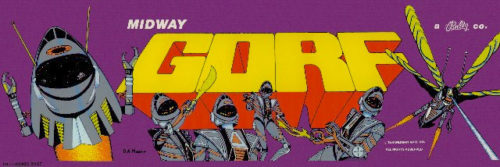 Gorf is an arcade game released in 1981 by Midway Mfg., whose name was advertised as an acronym for “Galactic Orbiting Robot Force”. It is a multiple-mission fixed shooter with five distinct modes of play, essentially making it five games in one. It is well known for its use of synthesized speech, a new feature at the time. The player controls a spaceship that can move left, right, up and down around the lower third of the screen. The ship can fire a single shot (called a “quark laser” in this game), which travels vertically up the screen. Unlike similar games, where the player cannot fire again until his existing shot has disappeared, the player can choose to fire another shot at any time; if the previous shot is still on screen, it disappears. Gorf consists of five distinct “missions”, each with its own patterns of enemies. The central goal of each mission is to destroy all enemies in that wave, which takes the player to the next mission. Successfully completing all five missions will increase the player’s rank and loop back to the first mission, where play continues on a higher difficulty level. The game continues until the player loses all their lives. The player can advance through the ranks of Space Cadet, Space Captain, Space Colonel, Space General, Space Warrior, and Space Avenger, with a higher difficulty level at each rank. Along the way, a robotic voice heckles and threatens the player, often calling the player by his current rank (for example, “Some galactic defender you are, Space Cadet!”). Some versions also display the player’s current rank via a series of lit panels in the cabinet. The missions are: 1.Astro Battles: The first mission is almost an exact clone of Space Invaders. This is the only mission that is not set in space, but rather against a sky-blue background. A small force of enemies (24 in Gorf vs. 55 in Space Invaders) attacks in the classic pattern set by the original game. The player is protected by a glittering parabolic force field that is gradually worn away by enemy fire. The force field switches off temporarily while the player’s shots pass through it. 2.Laser Attack: In this mission, the player must battle two formations of five enemies each. Each formation contains three yellow enemies that attempt to dive-bomb the player, a white gun that fires a single laser beam, and a red miniature version of the Gorf robot. 3.Galaxians: This mission is a clone of Galaxian, with the key differences being the number of enemies (24 in Gorf vs. 46 in Galaxian) and the way the enemies fire (pellets in Gorf, missiles in Galaxian). Gameplay is otherwise similar to the original game. 4.Space Warp: Mission 4 places the player in a sort of wormhole, where enemies fly outward from the center of the screen and attempt to either shoot down or collide with the player’s ship. It is possible to shoot enemy shots in this level. 5.Flag Ship: The Flag Ship is protected by its own force field (similar to the one protecting the player in Mission 1), and it flies back and forth and fires at the player. To defeat it, the player must break through the force field and destroy the ship’s core: if a different part of the ship is hit the player receives bonus points and the part breaks off and flies in a random direction, potentially posing a risk to the player’s ship. If the player successful hits the Flag Ship’s core, the Flag Ship explodes in a dramatic display, the player advances to the next rank, and play continues on Mission 1, with the difficulty increased.
Gorf is an arcade game released in 1981 by Midway Mfg., whose name was advertised as an acronym for “Galactic Orbiting Robot Force”. It is a multiple-mission fixed shooter with five distinct modes of play, essentially making it five games in one. It is well known for its use of synthesized speech, a new feature at the time. The player controls a spaceship that can move left, right, up and down around the lower third of the screen. The ship can fire a single shot (called a “quark laser” in this game), which travels vertically up the screen. Unlike similar games, where the player cannot fire again until his existing shot has disappeared, the player can choose to fire another shot at any time; if the previous shot is still on screen, it disappears. Gorf consists of five distinct “missions”, each with its own patterns of enemies. The central goal of each mission is to destroy all enemies in that wave, which takes the player to the next mission. Successfully completing all five missions will increase the player’s rank and loop back to the first mission, where play continues on a higher difficulty level. The game continues until the player loses all their lives. The player can advance through the ranks of Space Cadet, Space Captain, Space Colonel, Space General, Space Warrior, and Space Avenger, with a higher difficulty level at each rank. Along the way, a robotic voice heckles and threatens the player, often calling the player by his current rank (for example, “Some galactic defender you are, Space Cadet!”). Some versions also display the player’s current rank via a series of lit panels in the cabinet. The missions are: 1.Astro Battles: The first mission is almost an exact clone of Space Invaders. This is the only mission that is not set in space, but rather against a sky-blue background. A small force of enemies (24 in Gorf vs. 55 in Space Invaders) attacks in the classic pattern set by the original game. The player is protected by a glittering parabolic force field that is gradually worn away by enemy fire. The force field switches off temporarily while the player’s shots pass through it. 2.Laser Attack: In this mission, the player must battle two formations of five enemies each. Each formation contains three yellow enemies that attempt to dive-bomb the player, a white gun that fires a single laser beam, and a red miniature version of the Gorf robot. 3.Galaxians: This mission is a clone of Galaxian, with the key differences being the number of enemies (24 in Gorf vs. 46 in Galaxian) and the way the enemies fire (pellets in Gorf, missiles in Galaxian). Gameplay is otherwise similar to the original game. 4.Space Warp: Mission 4 places the player in a sort of wormhole, where enemies fly outward from the center of the screen and attempt to either shoot down or collide with the player’s ship. It is possible to shoot enemy shots in this level. 5.Flag Ship: The Flag Ship is protected by its own force field (similar to the one protecting the player in Mission 1), and it flies back and forth and fires at the player. To defeat it, the player must break through the force field and destroy the ship’s core: if a different part of the ship is hit the player receives bonus points and the part breaks off and flies in a random direction, potentially posing a risk to the player’s ship. If the player successful hits the Flag Ship’s core, the Flag Ship explodes in a dramatic display, the player advances to the next rank, and play continues on Mission 1, with the difficulty increased.